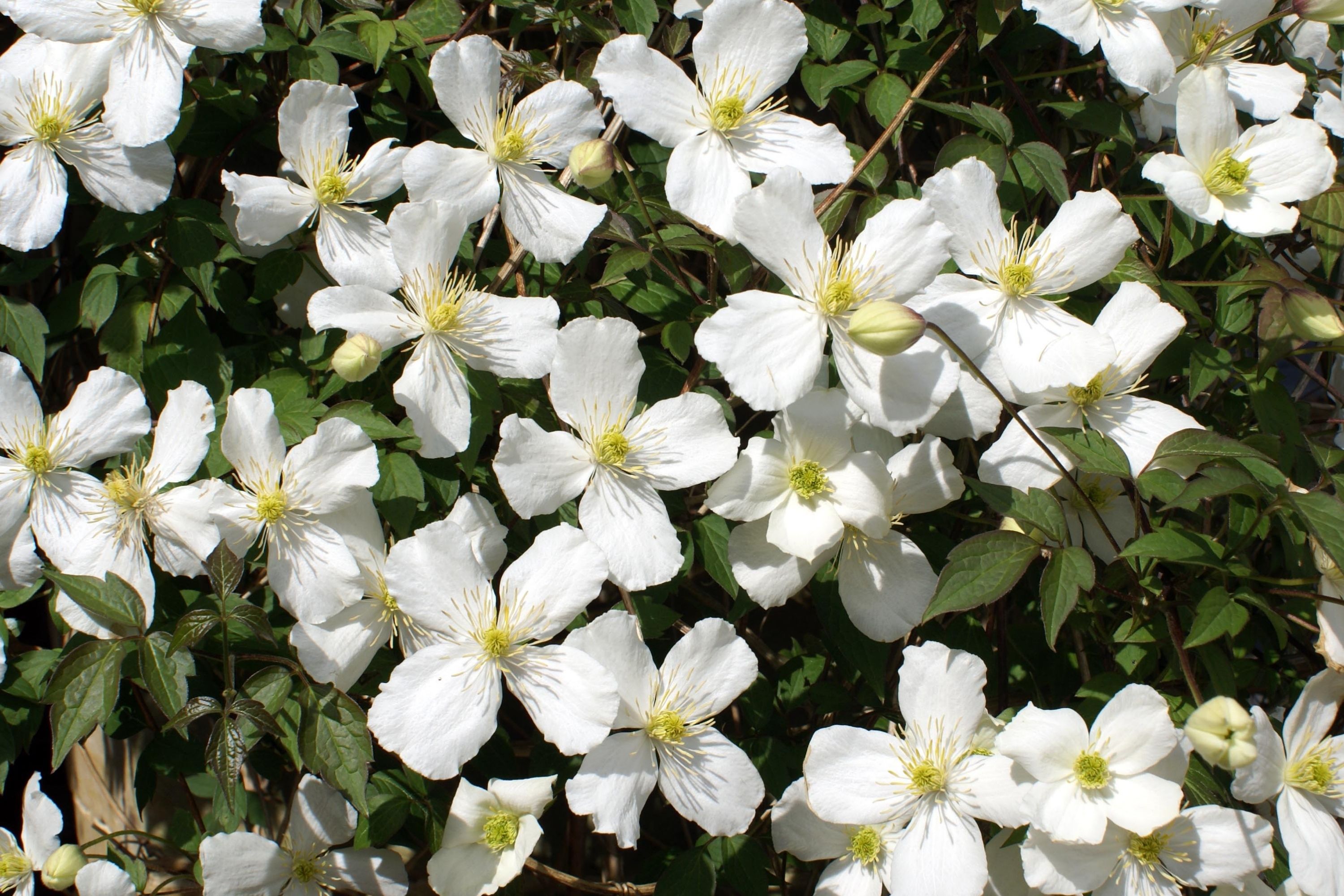Anemone clematis
(Clematis montana)

Description
Clematis montana is a flowering plant belonging to the Ranunculaceae family, native to the Himalayas, and is commonly known as the Anemone Clematis. This climbing vine has been a popular choice among gardeners for years due to its beautiful and fragrant blooms. In this article, we will explore everything there is to know about Clematis montana, from its characteristics and growing conditions to its propagation and care. Taxonomy: Clematis montana is part of the Clematis genus, which includes around 300 species of flowering plants in the Ranunculaceae family. The species name "montana" refers to its native habitat in the mountains of Asia. There are several cultivars of Clematis montana available, including 'Grandiflora', 'Rubens', 'Tetrarose', and 'Wilsonii'. Characteristics: Clematis montana is a deciduous vine that can reach up to 30 feet in length, making it an excellent choice for covering walls, trellises, or fences. Its leaves are dark green, with three to five leaflets that are oval in shape and pointed at the tips. The flowers of Clematis montana are the plant's most distinctive feature, and they bloom in late spring or early summer. The flowers are typically white or pink, with four petals that are slightly curved backward, giving them a star-like shape. The flowers have a sweet, vanilla-like fragrance, making them popular with pollinators. Growing conditions: Clematis montana is a hardy plant that can grow in a variety of conditions. It prefers well-drained soil with a pH between 6.0 and 7.0 and full sun to partial shade. The plant is also tolerant of drought and can grow in areas with low rainfall. However, it may require regular watering during the growing season to thrive. Clematis montana is hardy in USDA zones 6 to 9. Propagation: Clematis montana can be propagated by seed, layering, or stem cuttings. Seeds should be sown in the fall or early spring, and the young plants can be transplanted to their permanent location once they are large enough to handle. Layering involves bending a low-growing stem to the ground and covering it with soil, where it will develop roots. Once the new plant has developed, it can be severed from the parent plant and transplanted. Stem cuttings can be taken in early summer or early fall and should be rooted in a well-draining soil mix. Care: Clematis montana requires little maintenance once established, but some care is necessary to ensure healthy growth and abundant blooms. The plant should be pruned after flowering to remove any dead or damaged growth and to shape the plant. Regular fertilization can also help promote healthy growth and blooms. Clematis montana is susceptible to wilt, a fungal disease that can cause the plant to wilt and die suddenly. To prevent wilt, the plant should be grown in well-drained soil and kept well-watered during dry periods. Conclusion: Clematis montana is a beautiful and fragrant vine that is well-suited to a variety of growing conditions. With its hardiness, versatility, and striking blooms, it is a popular choice among gardeners. By following the proper growing conditions and care, this plant can thrive and provide years of beauty and enjoyment in the garden.
Taxonomic tree:







